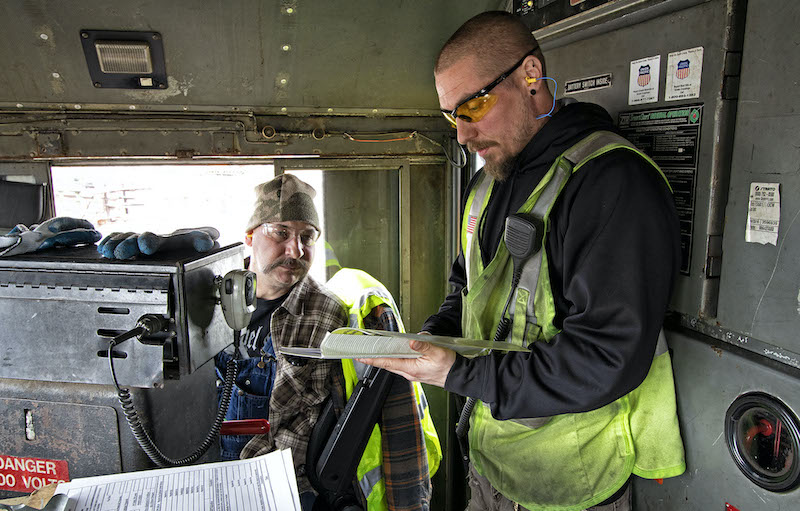By Justin Franz
WASHINGTON — The Presidential Emergency Board that was established last month to review the ongoing negotiations between America’s Class I railroads and a coalition of labor unions recommended a 22 percent pay increase for the nation’s railroaders and that negotiations on crew size take place at the local level, not the national level as the carriers have wanted.
The morning after the report came out, the Association of American Railroads announced that they believed the report provided a “useful basis” to continue talks. But front-line railroaders were irked by a comment made by the Class I negotiators stating that they believed the railroad’s record profits were the result of “capital investment and (financial) risk” and “not any contributions by labor.” As a result, the Class Is believe its railroaders only deserve a 16 percent pay hike. Unions had been asking for a 28 percent pay increase.
In July, President Joe Biden established a Presidential Emergency Board to review the years-long negotiations between labor and the railroads trying to hash out a new national contract. The appointment of an emergency board was done to prevent a nationwide strike that had been overwhelmingly approved by the nation’s rail union members. The board looked at each side’s proposals and made its recommendation this week. The railroads and labor now have 30 days to review them and come up with a solution. If an agreement can’t be forged, the railroads could lock employees out and the unions could go on strike. Observers have said that even a short work stoppage would have a major impact on the national rail network and the economy.
Along with recommendations regarding pay, the emergency board also recommends slight improvements to health care for employees and one additional paid personal day per year. However, the board did not choose to tackle some of the most continuous topics put before it, including attendance policies and issues regarding unpredictable call times for engineers and conductors. The board recommended both sides keep negotiating on those issues and, if an agreement can’t be had, then they should enter binding arbitration.
But perhaps the biggest issue addressed by the board was crew size. Class Is have wanted to remove conductors from the cab and instead have them work with multiple trains at once from a motor vehicle. The unions have been adamant against such practices. The board said that it would be best to let talks about roving conductors happen at the local level.



